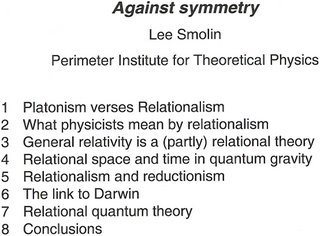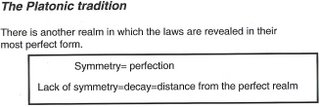If not fundamental, though, quark nuggets zipping around the galaxy would still be an amazing addition. And perhaps even more amazing, in the end, than any technically strange - or just generally bizarre - particles burrowing through the ground would be the fact that the planet is no longer just a block of dumb rock in their path. It is an ever better wired planet, monitored and thought about in ever more ingenious ways; it is a datasphere ever more sensitive to its surroundings and its own processes, from flashes in the upper atmosphere to rumblings in the core. We have made it a planet that notices things. We have made it an observant Earth.
You have to understand that if you are doing the research you want to know what "this avenue/hypothesis is to produce? It's almost as if "you understand" that the geometry exists under the "fundamental explanations of all concepts" as they are being developed. How a "different language" will be "put over top" of what is existing now schematically. We learn "to read" what has transpired from one who has more credentials then I, as I am only a student of the work.
At the same time how did such thought processes develop outward to experimental validation in the real world? So you must understand, that I too understand this process. Not only from a "conceptual understanding" but from it's associative analysis one as well. It allow me to develop intuitively into what work is now transpiring at Cern.
Strangelets are small fragments of strange matter. They only exist if the "strange matter hypothesis" is correct, in which case they are the true ground state of matter, and nuclei are actually metastable states with a very long lifetime.
Odd behavior?

A person most intense and preoccupied with the endeavours they work, will notice that time passes very quickly around them. It's as if the world bypassed them, as the focus had cost them the appearance or the attention needed to take care of themselves. "Should I care" as I think of them, whether their hair long or that their desk is pile high with paper?
Careful least you disrupt the train of thought, that while busy, the underlings stand ready to act according to the plans of the teacher.
I learnt over time to accept that even the academics will make allowances for the "uniqueness of individuals" even if that behaviour seems odd( sure call it detective work :0). To allow these attributes of the mind to go along with, the excellent and Nobel prize work that may be produced. Do you not think that Einstein in his last days was more concerned with the focus of his attentions then how dishevelled his hair was?
Pierre Auger on Cosmic Rays
"For in 1938, I showed the presence in primary cosmic rays of particles of a million Gigavolts -- a million times more energetic than accelerators of that day could produce. Even now, when accelerators have far surpassed the Gigavolt mark, they still have not attained the energy of 1020eV, the highest observed energy for cosmic rays. Thus, cosmic rays have not been dethroned as far as energy goes, and the study of cosmic rays has a bright future, if only to learn where these particles come from and how they are accelerated. You know that Fermi made a very interesting proposal that particles are progressively accelerated by bouncing off moving magnetic fields, gaining a little energy each time. In this way, given a certain number of "kicks," one could perhaps account for particles of 1018 -- 1020 electron volts. As yet, however, we have no good theory to explain the production of the very-high-energy particles that make the air showers that my students and I discovered in 1938 at Jean Perrin's laboratory on a ridge of the Jungfrau."
-- Pierre Auger, Journal de Physique, 43, 12, 1982
With introduction to the "Pierre Auger experiments" one learns to appreciate what the large Microscope can do. It allowed us to change the way in which we see cosmology working to include the "astrophysics approach to the description of the universe."
Do you think cosmology devoid of new theoretical approaches, as we venture into the even more abstract "D Brane" world? That we should exclude, such theoretics as a language over top of the process of physics, to not think it is not delving into the world of the geometries involved as well as that physics?
The microscopic process is much more diverse not only in terms of the language, but of how concepts can "cross over" into what we are doing with other approaches.
Beam Trajectories

This summer, CERN gave the starting signal for the long-distance neutrino race to Italy. The CNGS facility (CERN Neutrinos to Gran Sasso), embedded in the laboratory's accelerator complex, produced its first neutrino beam. For the first time, billions of neutrinos were sent through the Earth's crust to the Gran Sasso laboratory, 732 kilometres away in Italy, a journey at almost the speed of light which they completed in less than 2.5 milliseconds. The OPERA experiment at the Gran Sasso laboratory was then commissioned, recording the first neutrino tracks.
Now of course I opened the beginning of this blog post with a article that asks you to consider the domain in which they have considered earth and it's value as a experimental process. The "strange hypothesis" to which I am talking about as a "cross over analogies" to the developmental process of Cern.
The Pythagoreans were called mathematikoi, which means "those that study all"
Amazing isn't it? That if one understood that there was a original context for all that we create, then what shall this context be? So science asks, that the universal language display the mathematics as a basis of all "conceptual frameworks spoken" that are developed. This is, "the right way of it" as I have watched the scientists as they have developed their theories.
So we have this "microscopic view of reality" as the "power of ten" along with "this enlightenment" that taken over all our senses. What has happened now, as we venture out into the cosmos? What has happened when we've taken "theoretical positions" and adapted them to the processes of physics?





